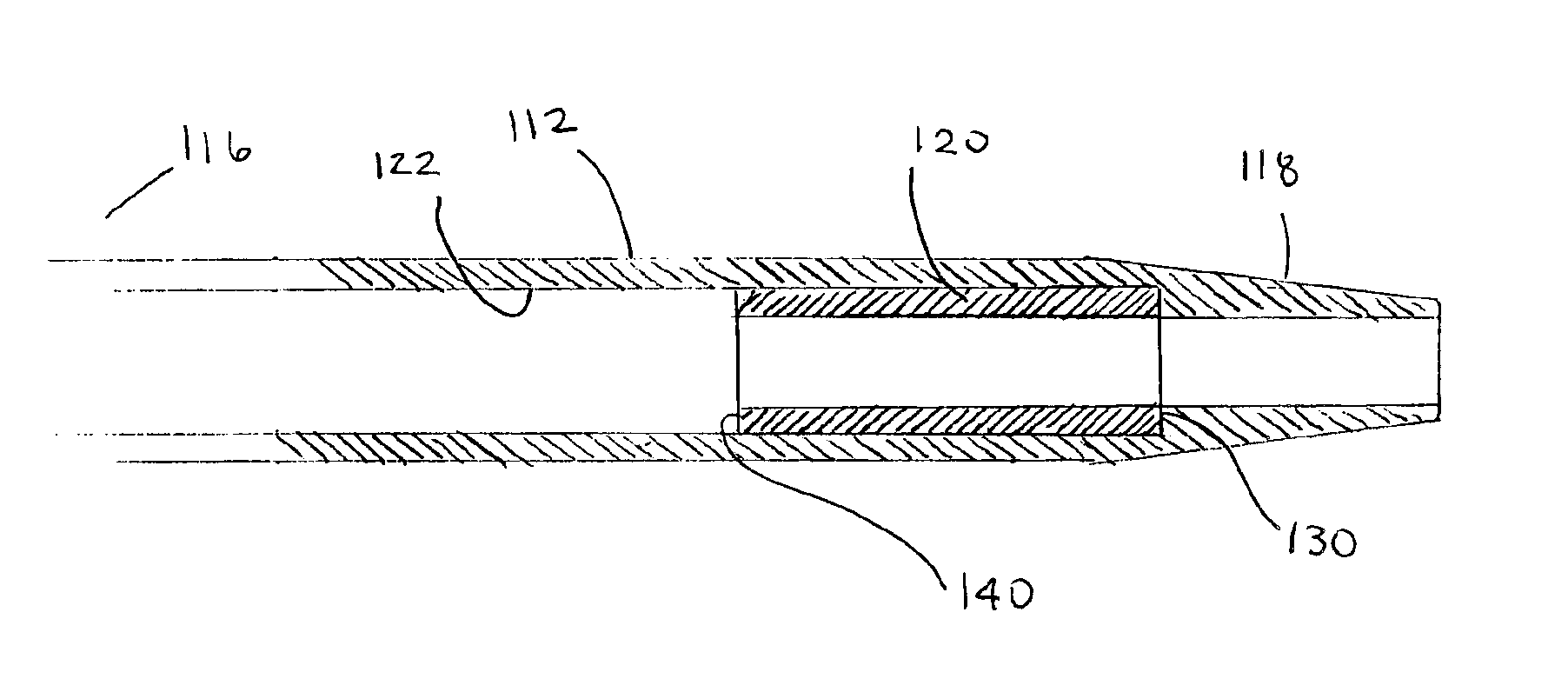Hard tip over-the-needle intravenous catheter
a soft, intravenous technology, applied in the field of catheters, can solve the problems of vascular trauma, discomfort for patients, and more difficult inserting
- Summary
- Abstract
- Description
- Claims
- Application Information
AI Technical Summary
Benefits of technology
Problems solved by technology
Method used
Image
Examples
Embodiment Construction
[0016]Reference may now be made to FIGS. 1 through 2 where the invention may be described in greater detail. With specific reference to FIG. 1, the present invention is a catheter assembly 10 comprising an over-the needle (OTN) catheter 12 and an insertion needle 14. The OTN catheter 12 comprises a length of flexible tubing having a lumen therethrough wherein the tubing is made preferably of a soft thermoplastic material such as polyurethane. The polyurethane tubing preferably has a hardness ranging between 50 and 90 on the Shore A scale, more preferably in the range between 65 A and 85 A. The soft resilient material serves to reduce vascular trauma and discomfort when in use as will be understood in the art. A suitable polyurethane is sold under the tradename Carbothane™ by Thermedics Corporation of Woburn, Mass. It should be recognized that other thermoplastic materials may be used that are soft and resilient and that would be effective at minimizing vascular trauma when being ins...
PUM
 Login to View More
Login to View More Abstract
Description
Claims
Application Information
 Login to View More
Login to View More - R&D
- Intellectual Property
- Life Sciences
- Materials
- Tech Scout
- Unparalleled Data Quality
- Higher Quality Content
- 60% Fewer Hallucinations
Browse by: Latest US Patents, China's latest patents, Technical Efficacy Thesaurus, Application Domain, Technology Topic, Popular Technical Reports.
© 2025 PatSnap. All rights reserved.Legal|Privacy policy|Modern Slavery Act Transparency Statement|Sitemap|About US| Contact US: help@patsnap.com


